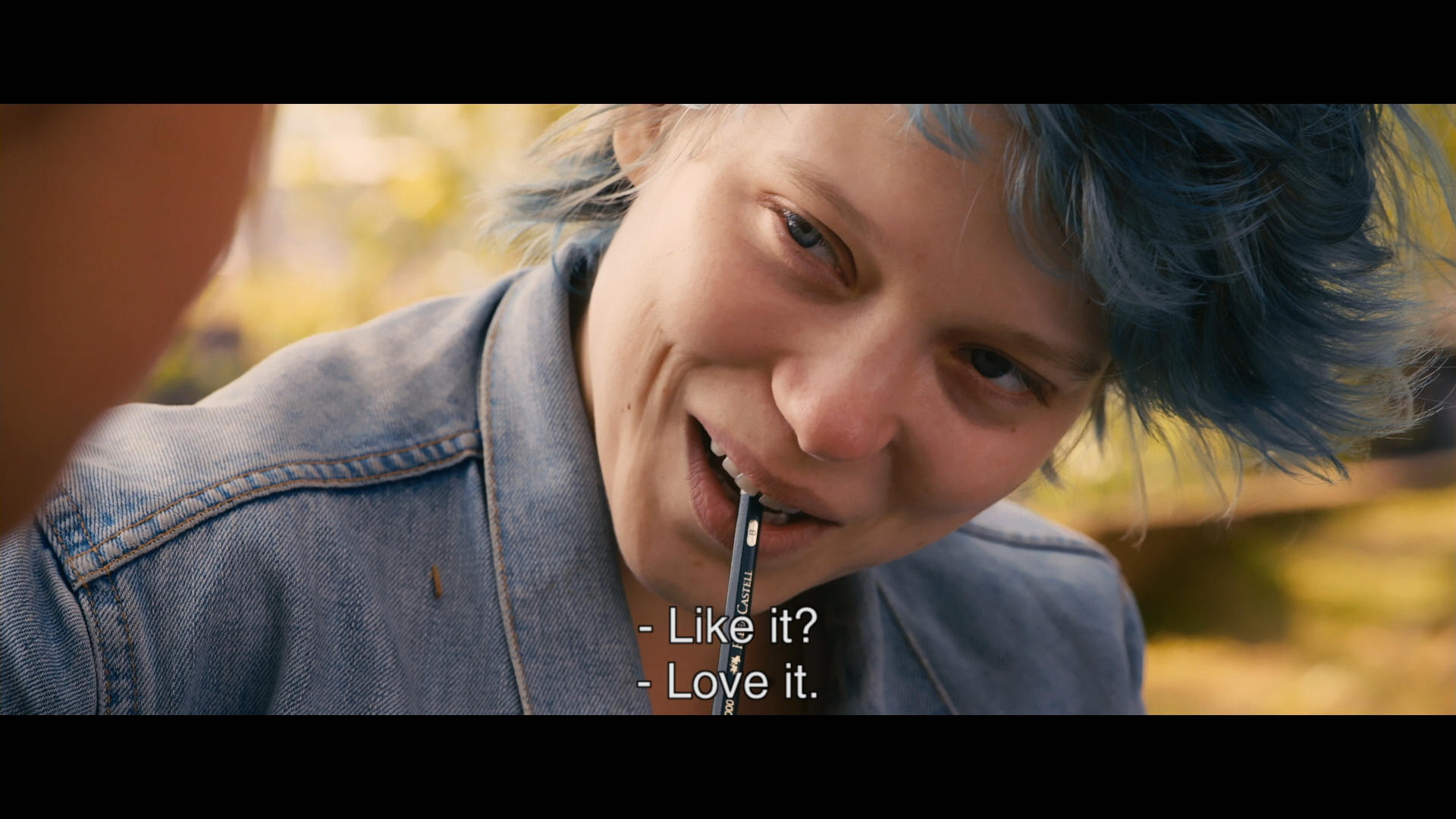Information related to Blue Is The Warmest Color Lesbian Scenes can be found here, hopefully providing broader insights for you.

Blue is the Warmest Color: Exploring Lesbian Intimacy and Desire
I remember the first time I saw Abdellatif Kechiche's “Blue is the Warmest Color.” I was a young, closeted lesbian, and the film's raw and honest portrayal of lesbian desire struck a chord deep within me. The intimate scenes between Adèle Exarchopoulos and Léa Seydoux were not just beautiful; they were revolutionary. They showed me, for the first time, that my desires were not shameful, but something to be celebrated.
The film's title, “Blue is the Warmest Color,” is a metaphor for the intensity and passion of Adèle's love for Emma. Blue is often associated with coldness and detachment, but in Kechiche's film, it becomes a symbol of warmth, intimacy, and desire. The film's lesbian scenes are not gratuitous; they are essential to the story and help to create a powerful and moving portrait of love and loss.
The Erotic Gaze and Female Desire
One of the most striking things about “Blue is the Warmest Color” is its use of the erotic gaze. Traditionally, the erotic gaze has been male-dominated, with men objectifying and sexualizing women. However, in Kechiche's film, the erotic gaze is female-centered. The camera lingers on Adèle's body, capturing her beauty and desire. We see Adèle through Emma's eyes, and we experience her desire for her.
This female-centered erotic gaze is a powerful and empowering force. It allows women to see themselves as objects of desire, and it helps to break down the traditional power dynamics between men and women. The lesbian scenes in “Blue is the Warmest Color” are not just about sex; they are about power, desire, and self-discovery.
The Importance of Representation
For many years, lesbian relationships have been marginalized and ignored in mainstream media. “Blue is the Warmest Color” is a groundbreaking film because it gives a voice to lesbian desire and intimacy. The film's lesbian scenes are not just beautiful and erotic; they are also important because they help to increase visibility and representation of lesbian relationships.
When lesbian relationships are visible in the media, it helps to normalize them and to break down stereotypes. It also helps to create a sense of community and belonging for lesbian women. The lesbian scenes in “Blue is the Warmest Color” are a powerful reminder of the importance of representation and visibility.
The Impact of “Blue is the Warmest Color”
“Blue is the Warmest Color” has had a profound impact on lesbian culture. The film has been praised for its honest and realistic portrayal of lesbian desire, and it has helped to increase visibility and representation of lesbian relationships in the media. The film has also been criticized for its explicit sexual content, but its supporters argue that this content is essential to the story and helps to create a powerful and moving portrait of love and loss.
Whether you love it or hate it, there is no denying the importance of “Blue is the Warmest Color.” The film has sparked a dialogue about lesbian desire and intimacy, and it has helped to break down stereotypes and increase visibility. The film is a powerful reminder that lesbian relationships are real, valid, and worthy of being celebrated.
Tips for Writing About Lesbian Intimacy and Desire
If you are a writer who wants to write about lesbian intimacy and desire, here are a few tips:
- Be honest and authentic. Don't try to write what you think people want to read. Write what you know, and write from your own experience.
- Be respectful. Lesbian relationships are not all about sex. They are also about love, companionship, and intimacy. Don't objectify your characters, and don't make light of their relationships.
- Be inclusive. Not all lesbians are the same. There is a wide range of diversity within the lesbian community, and it's important to reflect that in your writing.
Writing about lesbian intimacy and desire can be a challenge, but it is also a rewarding experience. By following these tips, you can create characters and stories that are both authentic and respectful, and you can help to increase visibility and representation of lesbian relationships in the media.
FAQ about Lesbian Intimacy and Desire
Q: What is the difference between lesbian sex and heterosexual sex?
A: Lesbian sex is sex between two women. Heterosexual sex is sex between a man and a woman. There is no one right way to have sex, and what works for one couple may not work for another. The most important thing is to communicate with your partner and to make sure that you are both enjoying yourselves.
Q: Is lesbian sex safe?
A: Lesbian sex is just as safe as heterosexual sex, as long as you practice safe sex practices. This includes using condoms, getting tested for STIs, and communicating with your partner about your sexual health.
Q: Is it normal to be attracted to other women?
A: Yes, it is perfectly normal to be attracted to other women. Sexual orientation is a spectrum, and there is no one right way to be. If you are attracted to other women, it does not mean that there is something wrong with you. It simply means that you are attracted to women.
Conclusion
Lesbian intimacy and desire is a beautiful and complex thing. It is something that should be celebrated and enjoyed. If you are a lesbian, be proud of who you are and don't be afraid to express your desire. The world needs more stories about lesbian love and intimacy, and I encourage you to tell your own.
Are you interested in learning more about lesbian intimacy and desire? Here are some resources that you may find helpful:

Image: porclouds.weebly.com
You have read an article about Blue Is The Warmest Color Lesbian Scenes. We express our gratitude for your visit, and we hope this article is beneficial for you.

